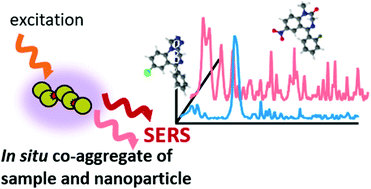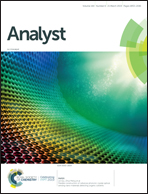Rapid detection of hypnotics using surface-enhanced Raman scattering based on gold nanoparticle co-aggregation in a wet system†
Abstract
Sensitive detection of drugs using a method with high qualification capability is important for forensic drug analysis. Vibrational spectroscopy is a powerful screening technique because it can provide detailed structural information of the compounds included in samples with simple experimental protocols. Among various spectroscopic techniques, surface enhanced Raman scattering (SERS) spectroscopy has attracted enormous attention owing to its ultra-high sensitivity. In this study, we developed a method for rapid detection of hypnotics using SERS with gold nanoparticle co-aggregation in a wet system. The developed method required a simple analytical protocol. This enabled rapid analysis with high stability and repeatability. We analyzed various hypnotics (19 types including benzodiazepines and nonbenzodiazepines) to investigate the structure–spectrum relationship. As a proof of concept for application to real crime samples, simulated spiked beverages containing one hypnotic (etizolam, flunitrazepam, zolpidem, or zopiclone) were analyzed. Diluting the beverage samples decreased the matrix effect and allowed for detection of these hypnotics. Except for flunitrazepam, strong signals were observed for all hypnotics, and the estimated lower limit of detection was 50 ppm in apple drink. The developed approach is a rapid method for screening analysis of hypnotics with low sample requirements.



 Please wait while we load your content...
Please wait while we load your content...